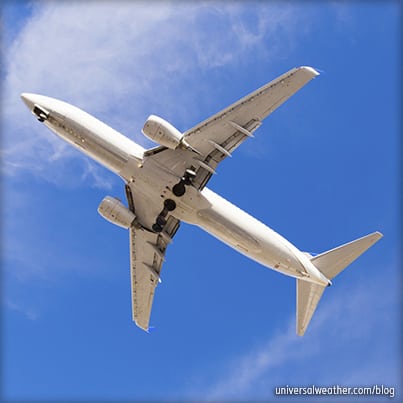Large Aircraft Operations in North and Latin America: Part 2 – Planning Details

This business aviation blog post continues from our article last week, entitled "Large Aircraft Operations in North and Latin America: Part 1 – Top Considerations."
With sufficient and effective pre-planning, large aircraft operations can be accomplished to most destinations worldwide without significant issues. Be sure to allow sufficient lead time for trip planning, consider all available options, and have a Plan "B" ready if a preferred destination cannot accommodate your operation.
The following is an overview of what details you need to know when planning large aircraft operations in North and Latin America:
1. Unique requirements
Logistically, manpower and support requirements of large aircraft can make operation of this equipment category more complex. Large aircraft operations often require additional/specialized Ground Support Equipment (GSE); more involved parking arrangements; and additional support in terms of in-flight catering, aircraft services, and crew transport. These operations may have 10-20 flight and operational staff members on board – in addition to large volumes of luggage, and perhaps even vehicles, to consider. Large aircraft charter flights can be more complex due to additional permit and documentation considerations. Customs, Immigration, and Quarantine (CIQ) and agricultural clearance of large aircraft often require additional planning and logistical considerations. At many airports, particularly in the U.S., large aircraft may be required to use a gate at the main terminal, rather than park in traditional general aviation areas. Consider having a 3rd-party support representative on hand, dedicated to overseeing ground support, for all travel throughout North and Latin America.
2. GSE requirements
Support logistics for large aircraft depend on the type of aircraft and its particular requirements. Smaller ACJs and BBJs often have internally deployed airstairs, but B767s and B747SPs for example usually require external stairs. Specialized tow vehicles, baggage loaders, and catering lift trucks may be needed. You may also require a Ground Power Unit (GPU) – especially if the auxiliary power unit is not allowed to be used at a particular airport – along with portable air conditioning units. If the handler is not accustomed to servicing large aircraft, there may be issues in terms of positioning GSE so as not to block other services – i.e., positioning a GPU so as not to block the airstairs and keeping baggage handling equipment away from the R1 door where a catering lift may need access.
3. Handling issues
The level of service in supporting large aircraft operations in North and Latin America is generally less than that in the Eastern Hemisphere because large-aircraft flights are not as common in the West. Handlers may need to rent special GSE equipment – stairs, baggage loaders, and catering lifts – which can cause delays. Several days’ advance notice may be needed to confirm large aircraft arrangements and to ensure that needed equipment is available. Keep in mind that requirements for specialized equipment usually result in higher handling charges.
4. Fuel considerations
Fuel volume requirements are much higher for large aircraft. So, it’s important to consider fuel delivery infrastructure and capacity as well as fuel cost and required time for uplifts. It’s recommended to carry a fuel release and to forward this to your handler and fueler prior to your estimated time of arrival. For tech stops plan on up to two hours for a fuel uplift and three hours if CIQ clearance is also required. Hydrant fuel sources may be recommended to ensure available volume and minimum delivery time needed for the uplift. For destination stops you may want to partially fuel on arrival to reduce fuel time on day of departure. When using fuel trucks, ensure that the fueler is aware, in advance, of fuel volume requirements. We’ve seen uplifts of up to 45,000 gallons for large aircraft movements, which can require multiple fuel trucks and, potentially, several hours in the uplift process. Special pricing can often be negotiated for larger-volume uplifts. If you’re parked at a North American Fixed-Base Operator (FBO), however, there may be issues in terms of using commercial fuel companies on the FBO ramp. FBOs may insist on providing your fuel, and in this case pricing may be much higher than on the commercial side of the field.
5. Local transport and hotels
As large aircraft operations often travel with 8-12 crew members (sometimes up to 32 crew members) and support personnel, it’s important to ensure that local transport arrangements are both sufficient and on time. You may need buses, or multiple cars, to move personnel and luggage from the aircraft to CIQ and from the airport to the hotel. There may at times be two or three different levels of crew to consider and transport separately – i.e., flight crew members, flight mechanics, and flight attendants/security personnel. Usually, you’ll need multiple hotel rooms for every stop. Due to required volume of hotel accommodations, it’s often necessary to book via a hotel’s on-site group/event department rather than through traditional booking sources.
Conclusion
The good news is that large aircraft operations can be successfully orchestrated to most destinations worldwide – even to smaller locations not accustomed to handling large aircraft. Keep in mind, however, that large aircraft operations to many secondary airfield locations may involve additional logistical planning and lead time requirements in reposition specialized GSE. Having a supervisory handling representative available may be a worthwhile option to ensure all arrangements are taken care of seamlessly.
Questions?
If you have any questions about operating large aircraft to North and Latin America, contact me at jerribanks@univ-wea.com or charlesgabb@univ-wea.com.




